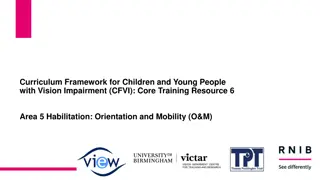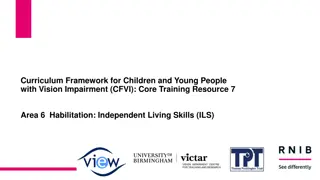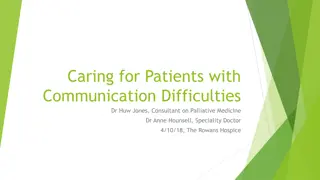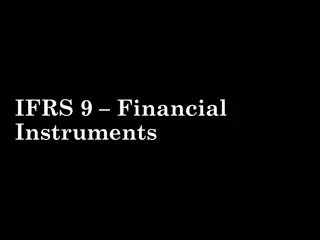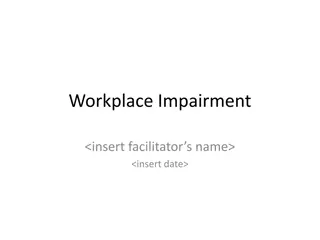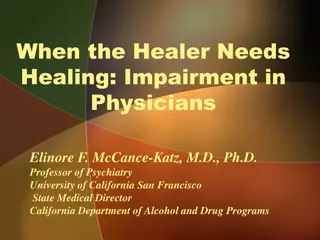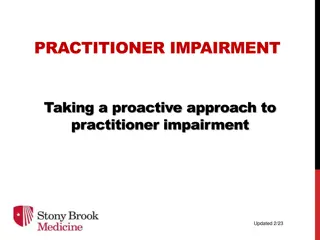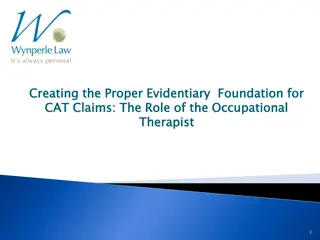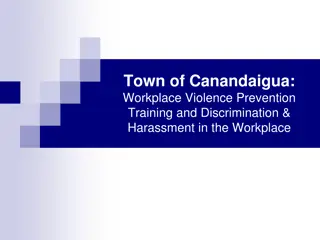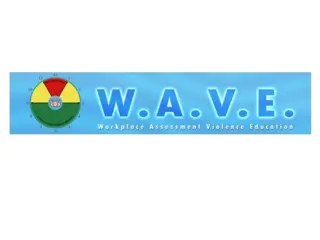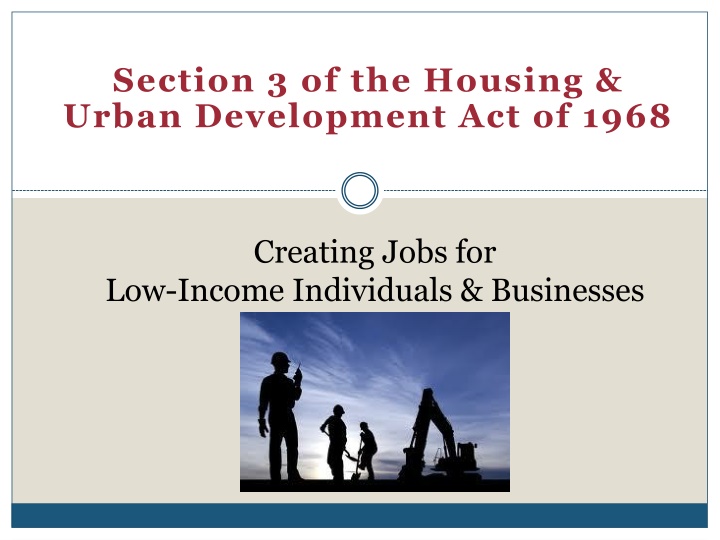
Improving Workplace Safety Through Impairment Management
Workplace drug testing is being reevaluated in New Zealand to focus on impairment rather than past drug use. The current approach is deemed ineffective, with potential for creating perverse incentives. A new impairment tool is being trialed, aiming to enhance workplace safety and prevent accidents. The initiative is driven by the need to maintain employee health, safety, and productivity while addressing potential barriers like structural racism.
Download Presentation

Please find below an Image/Link to download the presentation.
The content on the website is provided AS IS for your information and personal use only. It may not be sold, licensed, or shared on other websites without obtaining consent from the author. If you encounter any issues during the download, it is possible that the publisher has removed the file from their server.
You are allowed to download the files provided on this website for personal or commercial use, subject to the condition that they are used lawfully. All files are the property of their respective owners.
The content on the website is provided AS IS for your information and personal use only. It may not be sold, licensed, or shared on other websites without obtaining consent from the author.
E N D
Presentation Transcript
Section 3 of the Housing & Urban Development Act of 1968 Creating Jobs for Low-Income Individuals & Businesses
Overview History/Purpose What is Section 3? Applicability Definition of Section 3 Resident & Business Recipient Responsibilities Section 3 Reporting Requirements Best Practices & Common Findings of Non- Compliance 2
History 1967 Detroit Race Riots Kerner Commission Report Housing & Urban Development Act of 1968
Physicians warning of approaching death, with a prescription for life. - Martin Luther King, Jr., on the findings of the Kerner Commission Report
The Housing & Urban Development Act of 1968
Section 3 of the Housing & Urban Development Act employment and other economic opportunities generated by Federal financial assistance for housing and community development programs shall, to the greatest extent feasible, be directed toward low- and very low-income persons, particularly those who government assistance for housing. are recipients of - 12 U.S.C. 1701u
Section 3 Applicability Housing & Community Development Assistance Housing Construction & Rehabilitation Architectural, Engineering & Professional Services Management & Administrative Support Other Public Construction
Section 3 Applicability: Funding Thresholds 10 Recipients of $200,000 or more of HUD Housing and Community Development Assistance (CDBG, HOME, ESG) - 24 C.F.R. 135.3
Example The City of Warren s HUD assistance: $130,000 in CDBG funds $120,000 in HOME funds The City of Warren s construction-related projects: $25,000 for Park Improvement, paid for using CDBG funds Does Section 3 apply to the Park Improvement Project?
Section 3 Applicability: Contractors 12 The requirements apply to Contracts/Subcontracts in excess of $100,000 Contractors receiving contracts exceeding $100,000 are required to comply in the same manner as direct recipients If the threshold of $200,000 is met for the projects but no contract of $100,000 is awarded, the requirements only apply to the recipient 12
Section 3 Applicability: Entire Project Section 3 requirements apply to the entire project or activity regardless if the project is fully or partially funded with covered financial assistance. 13
Section 3 Applicability: CDBG/HOME/ESG If Section 3 applies, a recipient or contractor is obligated to direct, to the greatest extent feasible, new hires and contracts to Section 3 residents & business concerns. Who are Section 3 residents & business concerns? What does the greatest extent feasible mean?
Section 3 Resident Public Housing Resident, or A resident of metro area or non metro county in which the Section 3 covered assistance is expended, and who qualifies as a low- or very low-income person. 135.5
Section 3 Business Concern 51% or more owned by Section 3 Residents, or 30% of employed staff are Section 3 Residents; or 25% of subcontracts committed to Section 3 Businesses. 135.5
Section 3 Qualifications A Section 3 resident must meet the qualifications of the position to be filled. 135.34(c) A Section 3 business concern must have the ability and capacity to perform contract. 135.34(a)(2)
Section 3 Preference Section 3 of the HUD act is race and gender neutral. Hiring/Contracting Preference is based on income and location. Not MBE/WBE
Recipient Responsibilities: Greatest Extent Feasible In order to direct economic opportunities, to the greatest extent feasible, to low and very-low income individuals & businesses, recipients of HUD funding are expected to do the following
Recipient Responsibilities: Preference Provide hiring preference to Section 3 residents (Priority Consideration) Assist with achieving compliance among contractors Facilitate training and employment of residents (Priority Consideration)
Recipient Responsibilities Notify covered contractors and incorporate the Section 3 clause into contracts Found at 24 C.F.R. 135.38 Award contracts to Section 3 Businesses (Priority Consideration)
Recipient Responsibilities: Notification Notify Section 3 residents and business concerns about economic opportunities (i.e. hiring & contract bids) examples: Post Job/Contract Notices at Public Housing Sites Form partnerships with community organizations that work with low-income job seekers Work with local trade unions to identify businesses that qualify as Section 3 business concerns
Recipient Responsibilities: Numerical Goals Meet annual numerical goals 30% of new hires annually 10% of the total dollar amount of covered construction contracts Safe Harbor: Recipient is considered compliant if numerical goals are met (unless proof exists to the contrary)
Section 3 Reporting Recipients of HUD funding must annually submit HUD Form 60002. Even when Section 3 does not apply. Measures efforts to meet annual numerical goals Narrative explanations Failure to meet numerical goals Other Actions taken to achieve compliance
Section 3 Reporting: Determining Compliance If minimum numerical goals (safe harbor) are not met, each recipient bears the responsibility to explain why it was not possible Entering all zeros on the form without a valid explanation is considered noncompliance.
Section 3 Reporting: Due Date for CDBG/HOME Due Date: Section 3 Report should be submitted on the same day your CAPER is due. Submit via online reporting system
Section 3: Common Findings of Non-Compliance Failure to incorporate Section 3 requirements into internal hiring policy or bid solicitation processX Failure to make best effort to award contracts to Section 3 business concernsX Failure to meet numerical goals or provide narrative report explaining why numerical goals could not be metX Failure to monitor contractors compliance with Section 3 Failure to incorporate Section 3 clause in contract documents



